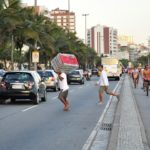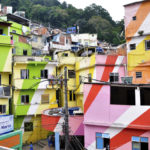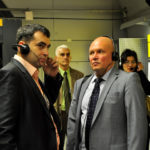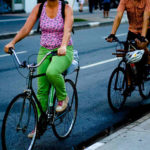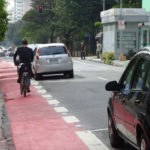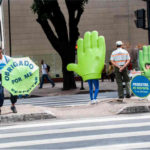Recent Posts by Maria Fernanda
More than 15 million people in the UK live in areas that have already adopted or are currently adopting speed limits. This data comes from the 20’s Plenty for Us, an organization in the UK dedicated to lowering speed limits ...

Rio de Janeiro is breathtaking. It just takes a walk along the boardwalk of the Copacabana and Ipanema beaches, for example, to be completely absorbed by the city’s natural beauty and the thousands of people enjoying these sites. There you ...

The largest city in Latin America has prioritized curbing car culture and making streets more pedestrian friendly. São Paulo’s new strategic master plan, unveiled on July 31, 2014, focuses on people-oriented development and improved public and non-motorized transport. The new ...

Cycling is already an important part of daily life many of Brazil’s urban residents. To grow the country’s cycling culture as well as provide better conditions for users, the new “Manual of Projects and Programs for Encouraging Cycling in Communities” ...

Traffic figures in Brazilian cities reflect a real civil war – on average, 109 people die every day and about 1,000 are injured in streets throughout the country. Just this past year, more than 40,000 died and 40 billion dollars were ...

A large delegation from Russia arrived yesterday in Brazil, ready to tour the country’s infrastructure, to learn about best practices for urban mobility. Representatives from the Russian Ministry of Transport, researchers, and municipal Secretaries of Transportation will tour Brazil in ...

With each passing day, the bike is increasingly becoming part of the urban landscape of São Paulo, Brazil’s largest city. Desiring to more fully integrate bikes as a transport mode – not just recreation – the city of São Paulo ...

Some actions, such as hopping in your car to go to the bakery, may be putting your life at risk. This week in the online journal, Galileu, Professor I-Min Lee, from the School of Public Health at Harvard University, draws ...

Belo Horizonte, Brazil, has taken an important step in protecting its pedestrians. Two weeks ago, the capital of the eponymous Brazilian state launched the campaign, “Pedestrians. I respect” (“Pedestre. Eu Respeito”) on city streets. The launch of the program is ...

This post was originally published in Portuegese on TheCityFix Brasil on June 8, 2011. About 7,000 people die per year in the state of Sao Paulo due to air pollution, according Paulo Saldiva, doctor, professor and expert of Environmental Pollution. The number scares ...

 Phil
Great article! A lot of what I have read here, has already been implemented in cities in the Netherlands, with Denmark the two bicycle countries par...
Phil
Great article! A lot of what I have read here, has already been implemented in cities in the Netherlands, with Denmark the two bicycle countries par...
 Bobby Salvin
I understand why some people wish mobility and GDP weren't connected, but it's wishful thinking. During the pandemic, for instance, when the economy...
Bobby Salvin
I understand why some people wish mobility and GDP weren't connected, but it's wishful thinking. During the pandemic, for instance, when the economy...
 Peace
Let me understand your Position -
We need to make our streets and public spaces dangerous and inhospitable so the disabled and infirm are forced to...
Peace
Let me understand your Position -
We need to make our streets and public spaces dangerous and inhospitable so the disabled and infirm are forced to...






